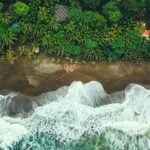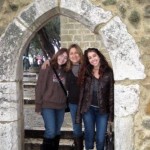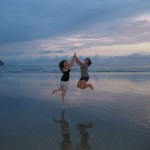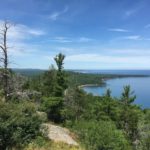Summiting Irazú: A Stunning Costa Rica Volcano
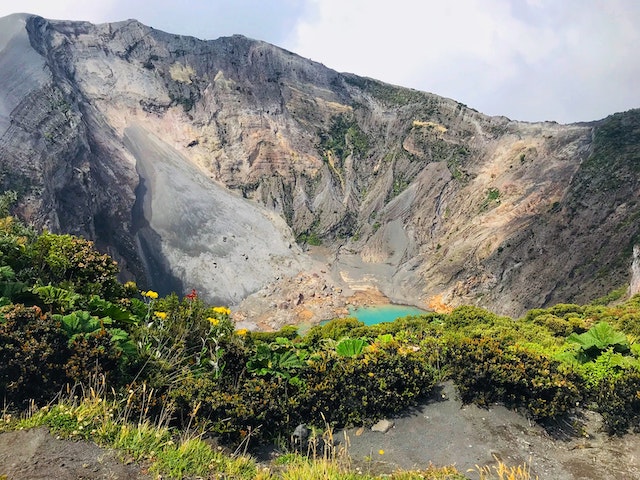
From the outskirts of Tres Rios, a city at roughly 4,400 feet in Central Valley, we drive to the west, winding up, up, up, en route to the summit of Volcàn Irazú, a secluded Costa Rica vacation spot and one of the nation’s famous volcanoes.
We wind past small pueblos. Restaurants, bus stops and abandoned buildings kiss the road, beckoning visitors to stop with their offerings of warmth and coffee. We wind past fincas. These beautiful acreages of rolling green land are interrupted only by the small cottages that call the land home. We wind past farms. Potatoes, onions and cabbage are grown here, harvested and sold along the roadside and in the cities down below.
We wind up from the valley where grey clouds fill the sky to a place where rain pelts the windshield. The rain turns into dense fog that drapes the landscape in a blanket of clouds and for several moments there is nothing to see but this tunnel of thick mist.
Summiting Irazú, A Stunning Costa Rica Volcano
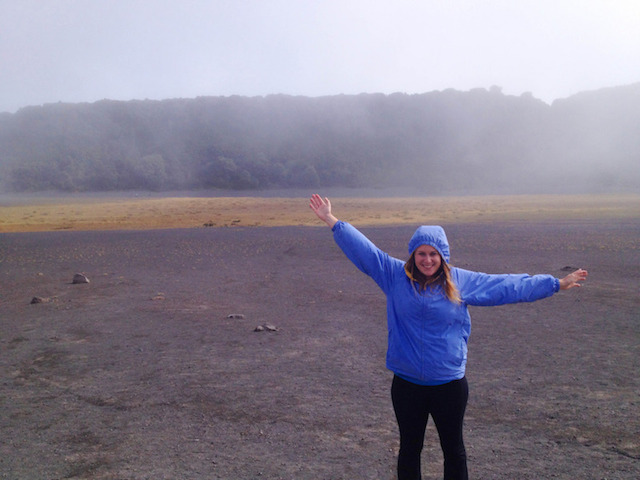
Through the fog we keep climbing until the sun breaks through, its brilliance revealing the bounty of colors and the vastness of hills on this brilliant mountainside.
On this relaxed Sunday afternoon, families are out hiking, driving, and lunching along the road at the various local restaurants that promise stunning views and traditional dishes. The cows are out this afternoon too: grazing, climbing, mooing.
Up, up, up we continue until we reach the gates of Irazú Volcano National Park. At 11,260 feet, Irazu Volcano is the highest active volcano in Costa Rica. We have climbed nearly 6,000 feet in less than an hour.
Entering the national park is an experience that echos what it can be like to be a gringa in Costa Rica. My Tico friend pays 1,000 colones ($1.86 US) to enter, and I, unable to remotely pass as being Tico with my strange accent and blonde locks, pay the gringa fee of $15.
My Tico friend pays 1,000 colones ($1.86 US) to enter, and I, unable to remotely pass as being Tico with my strange accent and blonde locks, pay the gringa fee of $15.
From the parking lot, it’s a short hike to a panoramic viewpoint Diego de la Haya, a green crater lake that is the volcano’s most recognizable image.
We hike through Playa Hermosa, a crater area that resembles not a beach as its name implies, but a dusty, moon landscape, or maybe J.R.R. Tolkien’s Middle Earth.
On this particular day the green crater lake is dry. On the clearest of days from here one can see both the Atlantic and Pacific coasts that border the country, but today, as most days, the air is thick with clouds, and we are lucky enough to just be able to see the crater.
That eruption was so profound that it showered the city of San Jose, roughly 30 miles away, in ash.
A frosty, wet air brushes our faces and my hands turn red. The average temperature here is 7 degrees Celsius, or 45 degrees Fahrenheit. It is the coldest I have been in Costa Rica.
Irazú Volcano last erupted in 1994. It’s most famous eruption occurred in 1963 during US President John F. Kennedy’s state visit to Costa Rica. That eruption was so profound that it showered the city of San Jose, roughly 30 miles away, in ash.
Irazú Volcano National Park is home to much wildlife including rabbits, armadillos and a variety of bird species.
Visitors without a car who wish to visit Volcàn Irazu can take the bus that leaves daily at 8 a.m. from the intersection of Avenida 2 and Calles 1/3. The bus returns to San Jose at 1 p.m. Round-trip fare is $8.
Summiting Irazú, A Stunning Costa Rica Volcano Related Reading
What Living in the Costa Rica Rainforest Taught Me
Have you summited Irazú? How was your trip? Email us at [email protected] for information about sharing your experience and advice with the Pink Pangea community. We can’t wait to hear from you.
Photo credits for Summiting Irazú, A Stunning Costa Rica Volcano by Lauren S.


